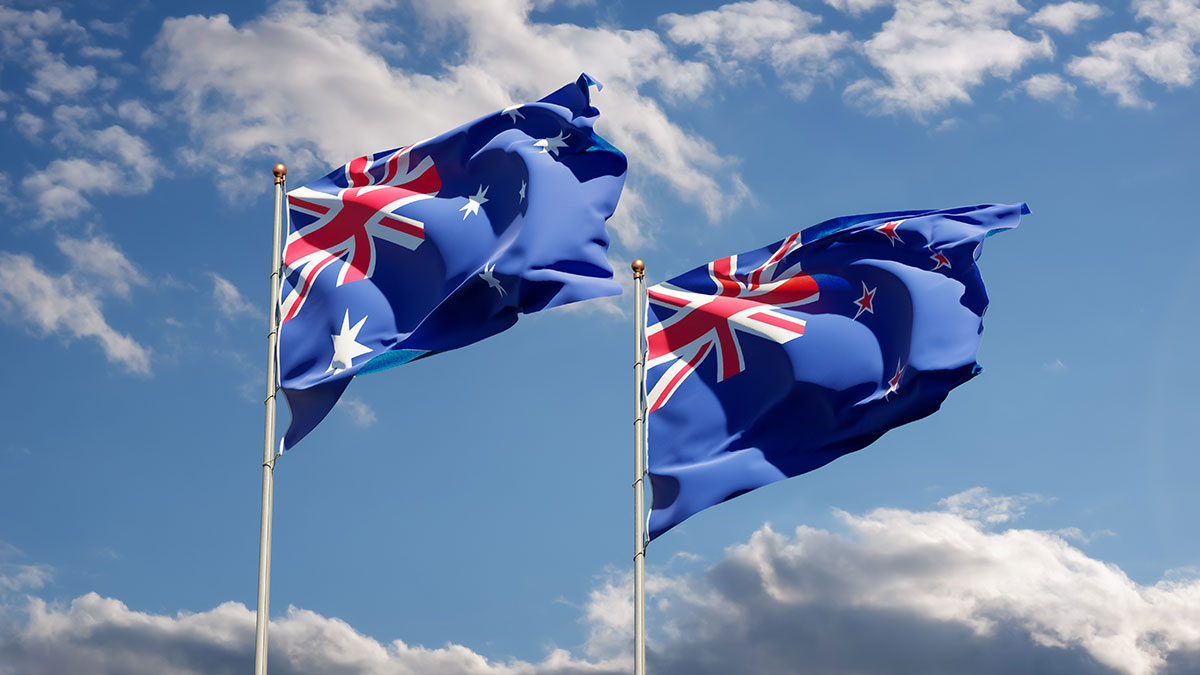We know that talking politics usually starts arguments but we just couldn’t help ourselves with this, our bonus part in The Relationship Across the Ditch series. We’re going to use the opportunity to take you through the political agendas of the relationship between Australia and New Zealand.
The Federation – Unity?
This isn’t that widely known, but the Australian Constitution still allows for the “colony” of New Zealand to join the Commonwealth of Australia. Way back in the 1860’s New Zealand had always participated in Australia’s colonial conferences – but as soon as the Australians started to talk about forming a federation in the 1890’s, New Zealand stayed away from the negotiations. There was talk of New Zealand joining, but ultimately they decided that they were made of better stuff than their Tasman siblings (‘Yeah, Right’ as the famous Tui billboards say).
Interestingly, it seems that Canberra had been designed with the potential for New Zealand to be a part of it. Manuka, an area in Canberra was named after the New Zealand tea tree with the anticipation that New Zealand may one day join the Federation.
There was originally going to be a “Wellington Avenue” in Canberra to recognise a link to the capital of New Zealand, but it was replaced with “Canberra Avenue” when it became clear that New Zealand would not join as a state of Australia.
Some commentators have expressed the opinion that it is time for the two countries to merge for historical (including ANZAC – we’ll get onto that later) and economic reasons, given that the two countries are quite culturally similar. Obviously this isn’t official by a long shot, but it’s some indication that the idea is plausible. It’s probably worth noting that both countries are already quite intertwined – for example most of the banks in New Zealand (ANZ, Westpac, ASB) are all owned by Australian banks, both are a part of the Commonwealth (legal systems stem from the Common Law and are also quite similar), and there are already heavy trade ties. It’s fair to say that there’d be an unbeatable sports combination if this did happen though!
Mike Rann and Russell Norman
Mike Rann, who was previously Premier of South Australia is actually a Kiwi who never surrendered his New Zealand passport. This is pretty unusual, as central government requires politicians to be exclusively Australian in every other state. Rann made political waves regarding the routes between Australia and New Zealand, with the South Australian government underwriting Qantas’ routes between Adelaide and Auckland.
Interestingly, the recently departed New Zealand Green Party Co-Leader Russell Norman was Australian (Brisbane) born and only moved to New Zealand when he was 30. He’s still a New Zealand Member of Parliament and has been involved in environmental activism throughout both Australia and New Zealand.
In July this year another political swap took place with media personality, occasional jail-bird, and native son of New Plymouth Derryn Hinch successfully running for election to the Australian Senate as head of “Derryn Hinch’s Justice Party”.
It’s always interesting when politicians move between countries – but it further reinforces the notion that Australia and New Zealand really aren’t that different.
Australia and New Zealand Army Corps (ANZAC)
The date is 25 April 1915 – we’re eight months into World War I. Allied soldiers land and storm the beach at Gallipoli in the hopes of thwarting Ottoman Empire. It was hoped that Turkey would surrender. But the Allies experienced strong resistance from the opposition and many lives were lost. Australia and New Zealand forces played a strong part in this – forming the ANZAC. As many as 44,000 ANZAC soldiers tragically did not return home to their families. The siege lasted 9 months before the Allies finally withdrew and the sacrifice seemed to have been in vain as the campaign was under funded, poorly conducted and did not significantly influence the outcome of the war. This was a tragic loss that both countries shared.
Following from this, both Australia and New Zealand celebrate ANZAC day to commemorate those troops who lost their lives at Gallipoli. The Returned Services Association of both countries do a brilliant job of celebrating the lives of those who never returned to us. ANZAC day is commemorated with a dawn service, commemorative marches, and remembrance services on the 25th of April each year and now extends to acknowledge the contribution and suffering of all those who have served.
While ANZAC day marks a tragic experience, it’s hugely significant for both countries. Following this, New Zealand gained greater confidence and identity. It strengthened the bond between Australia and New Zealand and appears to have paved the way for more modern agreements between the two countries, such as the Closer Economic Relations Agreement (CER). This very sad and special bond is quite sobering, and will likely ensure a strong political relationship between the two countries for many years to come, regardless of the outcome of sporting matches or sibling rivalry.
The relationship between Aussies and Kiwis will always be drenched in politics – that’s the nature of dealing with nearly a collective 28 million people. We’ve tried to keep the arguments to a minimum here – as Australia and New Zealand really do love each other as nations. If you’re looking to transfer currency between the two countries (or from one of these countries elsewhere), OrbitRemit has you covered. Check out our rates on the top right hand side of the screen!

